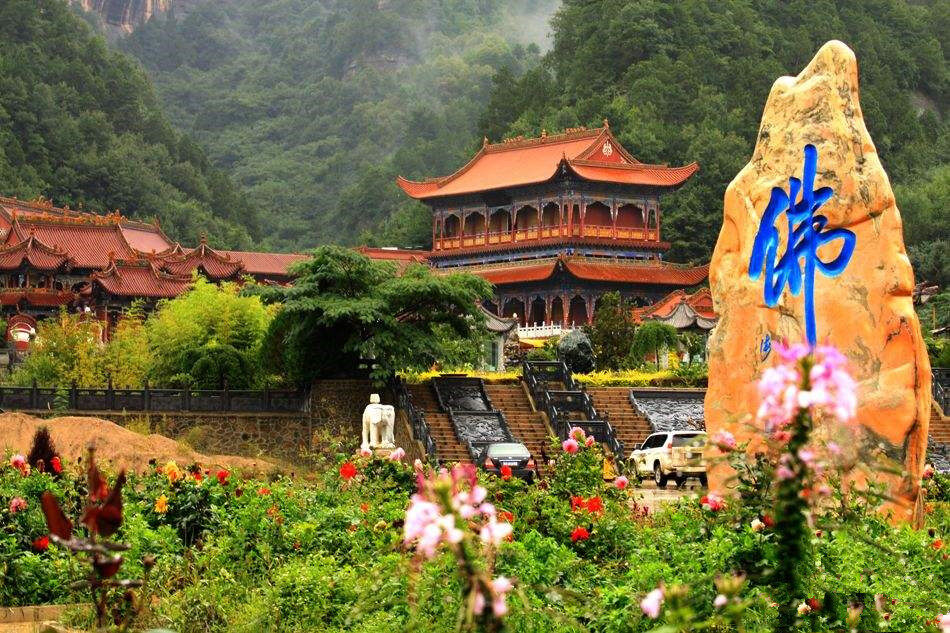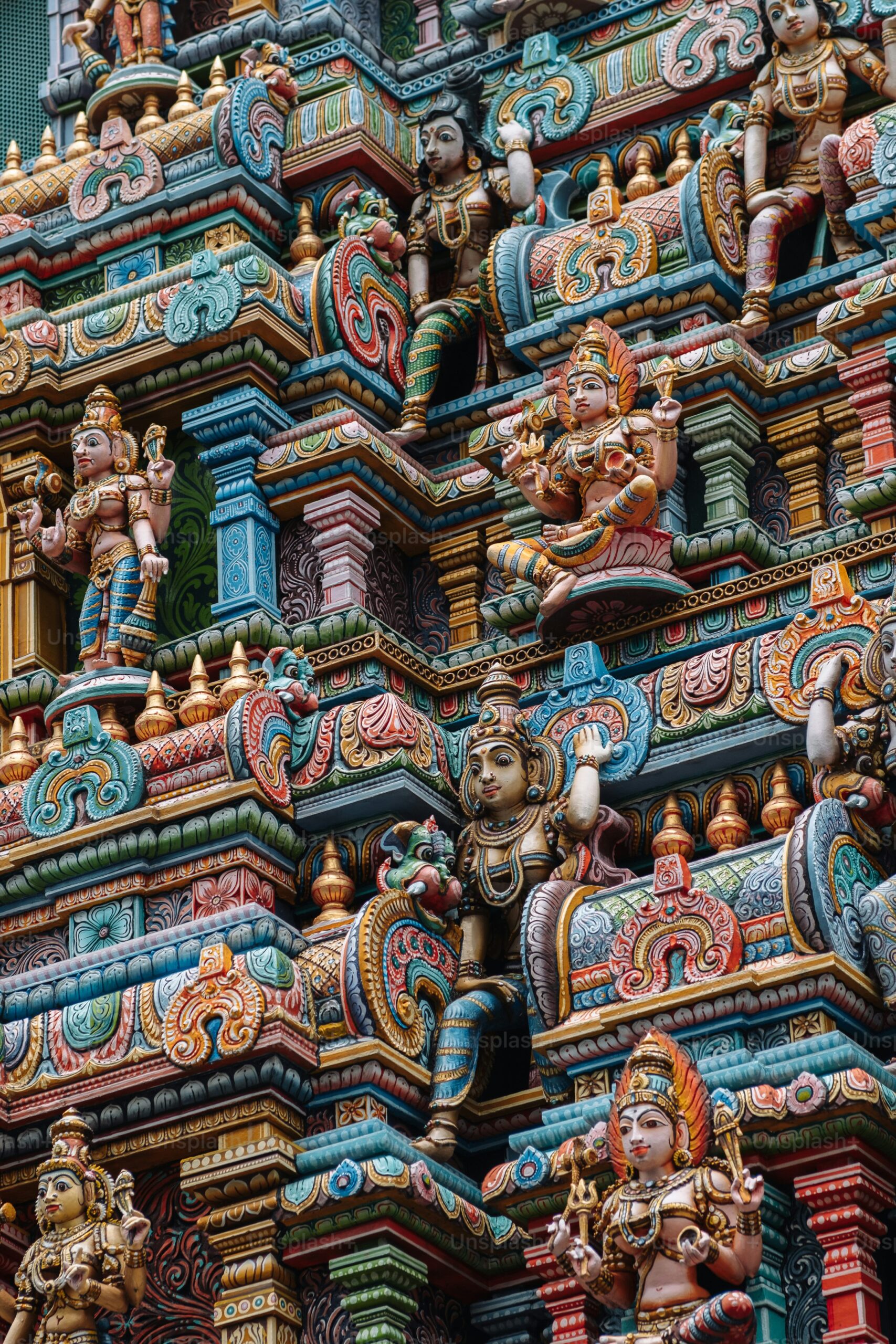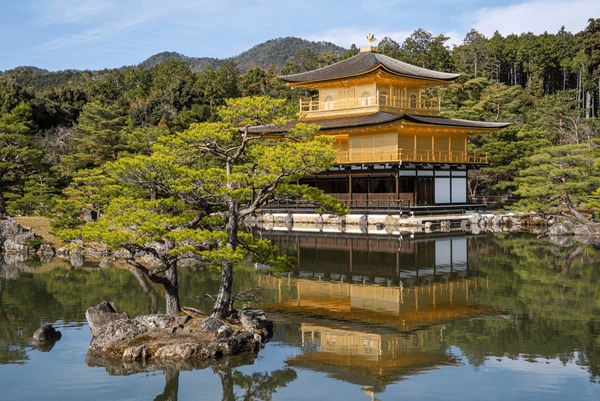Experience Tranquility at Huitu Temple: A Must-Visit in [Region Name]
![Experience Tranquility at Huitu Temple: A Must-Visit in [Region Name]](https://www.chinahistorytrip.com/wp-content/uploads/2025/09/huitu-temple-1991.jpg)
An Essential Guide to Visiting Huitu Temple
In This Guide
- An Essential Guide to Visiting Huitu Temple
- The Rich History and Legends of Huitu Temple
- Main Highlights: What You Absolutely Can’t Miss
- Planning Your Visit: A Practical Guide
- Tickets: Prices, Booking, and Tips
- How to Get There: A Complete Transportation Guide
- Local Cuisine and Accommodation Nearby
- Frequently Asked Questions
- Final Thoughts on Your Trip
Nestled amidst the serene landscapes of China, Huitu Temple (汇图寺) stands as a testament to the rich tapestry of Chinese history and culture. This ancient temple, steeped in tradition, invites visitors to explore its intricate architecture, tranquil surroundings, and profound spiritual significance.
A Journey Through Time
Visiting Huitu Temple is not merely a trip to a religious site; it’s an immersive journey into the heart of Chinese heritage. The temple, with its ornate carvings and vibrant murals, offers a glimpse into the artistic mastery and philosophical depth that characterize Chinese Buddhist architecture. As you walk through the temple’s hallowed halls, you can almost hear the whispers of monks who have sought solace within its walls for centuries.
Architectural Marvel
The design of Huitu Temple is a stunning example of traditional Chinese architecture, featuring sweeping roofs, intricate wooden beams, and colorful frescoes that depict stories of enlightenment and moral teachings. Each element of the temple’s structure is imbued with symbolism, reflecting the beliefs and practices of the Buddhist faith.

Huitu Temple.
Spiritual Significance
Huitu Temple serves as a spiritual haven for both pilgrims and casual visitors. The air is filled with the scent of incense, and the gentle sound of chanting creates an atmosphere of peace and reverence. Whether you are seeking spiritual guidance or simply a moment of reflection, the temple provides a tranquil escape from the hustle and bustle of modern life.
Visitor Experience
As an international traveler, visiting Huitu Temple allows you to connect with the profound cultural heritage of China. Here’s what to expect during your visit:
-
Guided Tours: Opt for a guided tour to gain deeper insight into the temple’s history and significance. Knowledgeable guides can enrich your experience by sharing fascinating stories and historical context.
-
Cultural Activities: Engage in traditional practices such as tea ceremonies or calligraphy workshops often held at the temple, providing a hands-on experience of Chinese culture.
-
Photography Opportunities: Capture the beauty of the temple and its surroundings. The interplay of light on the temple’s architecture and the lush greenery provides a stunning backdrop for photographs.
-
Local Cuisine: After exploring the temple, treat yourself to local delicacies at nearby eateries. Sampling authentic dishes allows you to savor the flavors of the region.

Huitu Temple.
Practical Information
-
Opening Hours: Huitu Temple is typically open daily from 9 AM to 5 PM, but be sure to check for any seasonal variations.
-
Entrance Fee: There may be a nominal entrance fee, which contributes to the upkeep and preservation of this historical site.
-
Etiquette: Visitors are encouraged to dress modestly and maintain a respectful demeanor while exploring the temple grounds.
In summary, Huitu Temple is not just a destination; it’s an experience that enriches the mind and soul. Whether you are a history enthusiast, a spiritual seeker, or simply a curious traveler, this temple offers a unique opportunity to explore the depths of Chinese culture and spirituality. Don’t miss the chance to step into a world where history, art, and faith converge in harmony.

Huitu Temple.
The Rich History and Legends of Huitu Temple
Nestled in the heart of China, Huitu Temple (汇图寺) is not just a site of worship but a rich tapestry woven with history and folklore. This ancient temple has stood the test of time, bearing witness to the cultural evolution of the region and embodying the spiritual aspirations of countless devotees.
Historical Significance
Huitu Temple dates back to the Tang Dynasty (618-907 AD), a golden age for Chinese art, culture, and religion. Initially established as a place for Buddhist worship, the temple has undergone various renovations and expansions, reflecting the architectural styles and spiritual ideologies of the eras that followed. Its enduring presence is a testament to the resilience and adaptability of Chinese religious practices.

Huitu Temple.
Over the centuries, Huitu Temple has served as a sanctuary for monks, scholars, and pilgrims alike. It became a hub for Buddhist learning, where many esteemed monks delivered teachings that shaped the spiritual landscape of the region. The temple’s intricate carvings and majestic halls echo the devotion of those who have walked its grounds, making it a living museum of spiritual heritage.
Legends and Myths
The legends surrounding Huitu Temple are as captivating as its architecture. One of the most popular tales tells of a sacred lotus flower that blossomed in a pond nearby. It is said that the flower possessed miraculous healing powers, attracting people from far and wide who sought cures for their ailments. This legend galvanized the temple’s reputation as a place of healing, drawing in a steady stream of visitors over the centuries.

Huitu Temple.
Another fascinating story is that of the Guardian Spirit of Huitu, believed to be a benevolent deity who protects the temple and its visitors. According to local lore, the spirit manifested as a brilliant light during times of distress, guiding lost travelers back to safety. This story has ingrained the temple with a sense of mystique and has fostered a deep sense of reverence among those who visit.
Architectural Marvels
The architectural design of Huitu Temple is a remarkable blend of traditional Chinese styles, characterized by elaborate eaves, intricate wooden carvings, and vibrant murals. Each structure within the temple complex tells a story, with detailed depictions of Buddhist iconography and scenes from ancient Chinese folklore.
Notable features include the Main Hall, where the statue of the Buddha resides, and the Bell Tower, which houses a massive bronze bell that resonates throughout the valley. The sound of the bell is believed to carry prayers to the heavens, further enhancing the temple’s spiritual ambiance.

Huitu Temple.
Preservation and Cultural Relevance
Today, Huitu Temple stands as an important cultural landmark, attracting both local and international visitors. Efforts to preserve its historical integrity are evident in the careful restoration projects undertaken by the government and cultural organizations. These initiatives ensure that future generations can continue to learn from and be inspired by this remarkable site.
Visitors to Huitu Temple not only experience a slice of Chinese history but also partake in the living traditions that surround it. Rituals, festivals, and ceremonies are regularly held, allowing travelers to immerse themselves in the vibrant spiritual life of the temple.

Huitu Temple.
Conclusion
Huitu Temple is more than just an architectural marvel; it is a sanctuary steeped in history and legends that resonate with the spiritual journey of its visitors. Whether you are seeking enlightenment, healing, or simply a deeper understanding of Chinese culture, a visit to Huitu Temple promises to be a memorable and enriching experience.
Main Highlights: What You Absolutely Can’t Miss
Main Highlights: What You Absolutely Can’t Miss at Huitu Temple (汇图寺)
Nestled in the heart of the historic city of Zhangye, Huitu Temple (汇图寺) stands as a testament to China’s rich religious and architectural heritage. This temple, with its intricate designs and serene atmosphere, offers visitors a unique glimpse into the spiritual life and cultural history of the region. Here are the key highlights that you simply cannot miss during your visit.
1. Majestic Architecture
Huitu Temple showcases an impressive blend of Han Chinese architectural elements and Tibetan influences. As you stroll through the temple grounds, take note of the intricately carved wooden beams and colorful murals that depict various Buddhist deities and scenes from Buddhist lore. The main hall, with its soaring ceilings and ornate altars, is particularly awe-inspiring.

Huitu Temple.
2. Peaceful Courtyards
Wander through the temple’s tranquil courtyards, where the gentle rustling of leaves and the soft sounds of chanting create a peaceful ambiance. These spaces are perfect for reflection and meditation, allowing you to soak in the spiritual energy of the site. Look for the ancient ginkgo tree, said to be over a thousand years old, which stands as a symbol of longevity and resilience.
3. Buddhist Statues and Relics
The temple is home to a stunning collection of Buddhist statues and relics, each with its own story. Don’t miss the towering statue of Guanyin, the Goddess of Mercy, which is adorned with intricate jewels and surrounded by offerings from devotees. The relics, housed in a special chamber, provide insight into the temple’s history and the evolution of Buddhist practice in the region.
4. Cultural Significance
Huitu Temple is not just a place of worship; it is also a cultural hub that has been pivotal in the spread of Buddhism in the area. Learn about the temple’s historical significance through the informational plaques scattered throughout the grounds. Engage with local monks, who often share their insights on the teachings of Buddhism and the temple’s role in the community.

Huitu Temple.
5. Vibrant Festivals
If your visit coincides with one of the temple’s vibrant festivals, you are in for a treat. These celebrations feature colorful processions, traditional music, and dance performances that bring the temple to life. Experience the local culture firsthand as the community gathers to honor their traditions and spirituality.
6. Scenic Surroundings
Situated against the backdrop of Zhangye’s stunning landscapes, Huitu Temple is the perfect starting point for exploring the surrounding natural beauty. After your visit, consider taking a short hike in the nearby hills, where you can enjoy panoramic views of the countryside and perhaps even catch a glimpse of the famous Rainbow Mountains.

Huitu Temple.
7. Photography Opportunities
With its stunning architecture and picturesque surroundings, Huitu Temple offers countless opportunities for photography. Be sure to bring your camera to capture the vibrant colors of the murals, the serene expressions of the Buddha statues, and the natural beauty of the temple grounds. Sunrise and sunset are particularly enchanting times to visit, as the golden light casts a magical glow over the complex.
Conclusion
A visit to Huitu Temple is not just about exploring a place of worship; it’s about immersing yourself in the rich tapestry of Chinese culture and spirituality. Whether you are a history buff, a nature lover, or simply seeking a moment of tranquility, Huitu Temple promises an unforgettable experience that resonates long after you leave its grounds. Make sure to include this remarkable site in your travel itinerary, and prepare to be inspired by its beauty and significance.
Planning Your Visit: A Practical Guide
Planning Your Visit to Huitu Temple (汇图寺)
Nestled in the heart of China’s rich history and culture, Huitu Temple offers an enchanting glimpse into ancient Chinese architecture and spiritual practices. As you prepare for your visit, here’s a practical guide to ensure a rewarding experience.

Huitu Temple.
Getting There
Huitu Temple is located in the picturesque region of Jiangxi Province, easily accessible by various modes of transportation:
- By Air: The nearest major airport is Nanchang Changbei International Airport, approximately 60 kilometers from the temple. From there, you can take a taxi or shuttle bus directly to the temple.
- By Train: High-speed trains frequently connect major cities to Nanchang. Once in Nanchang, take a local train or bus to the nearby town. Ensure you check the schedule ahead of time for the best routes.
- By Bus: Local buses from Jiangxi’s major cities can take you close to the temple, but be prepared for a short walk from the bus station.

Huitu Temple.
Best Time to Visit
The ideal time to explore Huitu Temple is during spring (March to May) and autumn (September to November), when the weather is mild and the landscape is particularly beautiful. The temple hosts various festivals, especially during the first month of the lunar calendar, which can be an exciting time for visitors wanting to experience local traditions.
Admission Details
- Entrance Fee: Admission to Huitu Temple is typically affordable, with fees usually around 30-50 RMB.
- Opening Hours: The temple is open daily from 8:00 AM to 5:00 PM. Arriving early can help you avoid crowds and enjoy a peaceful atmosphere.
What to Expect
Huitu Temple is renowned for its stunning architecture, serene atmosphere, and historical significance. Here’s what to look forward to:
- Architecture: Marvel at the intricate designs of the temple’s structures, which embody traditional Chinese architectural styles. Don’t forget to take photos of the beautifully carved wooden beams and tiled roofs.
- Cultural Experience: Engage with local monks and visitors. You may witness rituals, such as incense burning and chanting, offering a unique insight into Buddhist practices.
- Scenic Surroundings: The temple is surrounded by lush greenery and tranquil gardens, perfect for leisurely walks and contemplation.
Tips for Your Visit
- Dress Appropriately: As a place of worship, ensure your attire is respectful. Comfortable shoes are recommended, as you may be walking on uneven paths.
- Learn Some Basic Mandarin: While some staff may speak English, knowing a few phrases in Mandarin can enhance your experience and interaction with locals.
- Bring Cash: While some places may accept digital payments, it’s wise to carry cash for small purchases or offerings.
Nearby Attractions
Make the most of your visit by exploring other attractions in the vicinity:
- Local Markets: Discover local handicrafts and traditional snacks in nearby markets.
- Natural Scenery: Consider visiting the surrounding parks and mountains for hiking opportunities and breathtaking views.
- Historical Sites: Explore other temples or historical landmarks within a short distance to deepen your understanding of the region’s culture.
By following this guide, your visit to Huitu Temple will not only be enjoyable but also enriching. Prepare to immerse yourself in the captivating history and spirituality that this remarkable site offers.
Tickets: Prices, Booking, and Tips
Visiting Huitu Temple (汇图寺) offers a unique glimpse into China’s rich history and spiritual heritage. To ensure a smooth and enjoyable experience, here’s a guide to ticket prices, booking options, and some handy tips for international travelers.
Ticket Prices
- General Admission: Approximately 50 CNY (about $7 USD).
- Discounted Rates: Students and seniors may receive a discount, typically around 25 CNY (about $4 USD). Be prepared to present valid identification.
- Group Rates: If you’re traveling with a group of more than 10 people, inquire about group tickets, which may offer additional savings.
Booking Information
- Online Reservations: Tickets can be purchased through official websites or popular travel platforms like Trip.com and Ctrip. It’s advisable to book at least a few days in advance, especially during peak tourist seasons, to secure your desired date and time.
- On-Site Purchase: Tickets are available at the entrance of Huitu Temple. However, be aware that during busy periods, you may face long queues. Arriving early in the morning can help you avoid the crowds.
Opening Hours
- Daily Hours: Huitu Temple is generally open from 8:00 AM to 6:00 PM. It’s best to check for any seasonal changes in hours before your visit.
- Best Time to Visit: Early morning or late afternoon is ideal for fewer crowds and great lighting for photographs.
Tips for Your Visit
- Dress Code: As a place of worship, visitors are encouraged to dress modestly. Comfortable shoes are recommended as you may be walking on uneven surfaces.
- Guided Tours: While many prefer to explore independently, consider hiring a local guide. They can provide invaluable insights into the temple’s history, architecture, and significance, enriching your experience.
- Photography: Be respectful when taking photos, especially during prayer times. Some areas may have restrictions, so look for signs indicating where photography is allowed.
- Local Etiquette: Maintain a respectful demeanor, observe silence in worship areas, and follow any posted guidelines.
Accessibility
- Transportation: Huitu Temple is accessible via public transportation. Buses and taxis frequently service the area. It’s also a short walk from the nearest metro station.
- Facilities: The site is equipped with basic facilities like restrooms and a small café for refreshments. However, it’s wise to carry water and snacks, especially if you plan to spend a few hours exploring.
By following these guidelines, visitors to Huitu Temple can immerse themselves in the tranquility and beauty of this significant cultural site while ensuring a smooth and enriching experience. Enjoy your journey through time at Huitu Temple!
How to Get There: A Complete Transportation Guide
Getting to Huitu Temple: Your Comprehensive Transportation Guide
Visiting Huitu Temple (汇图寺) offers a unique glimpse into China’s rich cultural and historical tapestry. While the temple itself is a serene escape from the hustle and bustle of modern life, navigating your way there can be an adventure worth savoring. Below is a detailed guide on how to reach this sacred site, ensuring your journey is as enjoyable as your destination.
1. Planning Your Arrival
Before setting off, it’s important to know where Huitu Temple is located. Situated in the picturesque area of Lanzhou, Gansu Province, this temple is easily accessible from major transportation hubs.
2. Arriving by Air
Lanzhou Zhongchuan International Airport (LHW) is the nearest airport to Huitu Temple. Here’s how to proceed:
- Domestic Flights: Regular flights connect Lanzhou with major cities like Beijing, Shanghai, and Xi’an.
- International Flights: Limited international connections are available, but travelers can often transit through Beijing or Chengdu.
Transportation from the Airport:
– Taxi: The most convenient option. Expect a fare of approximately CNY 100-150 to the city center.
– Airport Shuttle: Buses run to various parts of the city. Check the schedule upon arrival.
3. Getting to Lanzhou City Center
Once you arrive in Lanzhou, you’ll need to make your way to the city center, where further transportation options are available:
- Taxi: Widely available and reasonably priced; fares typically range from CNY 30-50 depending on your exact destination.
- Public Bus: Several lines operate, but it can be cumbersome if you have heavy luggage.
4. Reaching Huitu Temple
With your feet firmly on the ground in Lanzhou, here are your options for getting to Huitu Temple:
-
By Taxi: The simplest and most direct method. Huitu Temple is located about 30 kilometers from Lanzhou city center. The journey will take about 40-60 minutes depending on traffic, with fares likely around CNY 70-100.
-
By Public Transport:
- Bus: Look for local buses heading towards Yuzhong County. Buses 110 and 320 will get you in the general direction. You may need to transfer to a local minibus or take a taxi from the bus drop-off point to the temple.
-
Duration: Expect the trip to take 1.5 to 2 hours depending on connections and wait times.
-
By Private Car or Rental: If you prefer flexibility, consider renting a car. There are several rental agencies in Lanzhou. Ensure you have a GPS or map app handy as some local navigation may be required.
5. Best Time to Visit
To make the most of your visit to Huitu Temple, consider the following tips:
– Seasonal Considerations: Spring (April-May) and autumn (September-October) offer the most pleasant weather.
– Cultural Events: Check if any local festivals or temple events coincide with your visit for a richer experience.
6. Local Tips
- Language: While many people in Lanzhou speak Mandarin, English can be limited. Download a translation app or have basic phrases ready.
- Cash: While digital payments are widely accepted, keeping some cash (CNY) on hand is advisable for smaller vendors or rural areas.
- Respect Local Customs: When visiting the temple, dress modestly and observe local customs, especially during prayer times.
Conclusion
Reaching Huitu Temple is more than just a journey; it’s an opportunity to engage with the rich historical and cultural backdrop of China. Whether you choose to travel by air, taxi, or public transport, your adventure is sure to be filled with memorable experiences. Enjoy your exploration of this serene temple and the beautiful landscapes that surround it!
Local Cuisine and Accommodation Nearby
When visiting Huitu Temple (汇图寺), the experience extends far beyond the temple’s magnificent architecture and rich history. The region surrounding the temple offers a delightful array of local cuisine and comfortable accommodations that can enhance your cultural journey. Here’s a curated list of recommendations to elevate your visit.
Local Cuisine
- Huitu Vegetarian Restaurant (汇图素食馆)
Enjoy a peaceful dining experience at this vegetarian restaurant, which specializes in dishes made from fresh, locally sourced ingredients. The restaurant’s signature dishes include: - Buddha’s Delight: A medley of seasonal vegetables and tofu, stir-fried with aromatic spices.
- Lotus Root Stir-fry: A crunchy delight that perfectly complements the flavors of the region.
-
Herbal Teas: Pair your meal with a selection of herbal teas known for their health benefits.
-
Local Noodle House (当地面馆)
Just a short walk from the temple, this cozy noodle house serves up traditional Chinese noodles. Here, you can try: - Beef Noodle Soup: Tender beef slices served in a rich broth, garnished with fresh herbs.
-
Vegetable Noodles: A lighter option featuring seasonal vegetables and a savory sauce.
-
Street Food Stalls
As you explore the area around Huitu Temple, keep an eye out for street food vendors offering local snacks. Must-try items include: - Steamed Buns (包子): Fluffy and filled with various ingredients, these buns are perfect for a quick bite.
- Jianbing (煎饼): A savory Chinese crepe filled with egg, herbs, and your choice of fillings.
Accommodation Nearby
- Huitu Temple Guesthouse (汇图寺客栈)
This charming guesthouse offers a unique experience for travelers, with rooms decorated in traditional Chinese style. Guests can enjoy: - Comfortable Rooms: Equipped with modern amenities while retaining classic decor.
-
Local Breakfast: Start your day with a delightful breakfast featuring regional specialties.
-
Eco-Friendly Hotel (生态酒店)
For those who prioritize sustainability, this eco-friendly hotel uses green practices without sacrificing comfort. Features include: - Organic Restaurant: Focused on serving dishes made from organic, locally sourced ingredients.
-
Wellness Spa: A perfect way to unwind after a day of exploring, offering traditional Chinese therapies and massages.
-
Historic Inn (历史客栈)
Located within walking distance of Huitu Temple, this historic inn provides a glimpse into the past with its ancient architecture and artifacts. Highlights include: - Heritage Rooms: Each room tells a story, adorned with antiques and traditional furnishings.
- Cultural Activities: Participate in tea ceremonies and calligraphy workshops offered by the inn.
Conclusion
Whether you are savoring the flavors of local dishes or resting in comfortable accommodations, the vicinity of Huitu Temple has much to offer. Embrace the rich culinary heritage and warm hospitality of this region as you explore the spiritual depths of Huitu Temple.
Frequently Asked Questions
Frequently Asked Questions about Huitu Temple (汇图寺)
1. What is Huitu Temple known for?
Huitu Temple is renowned for its rich history and cultural significance as a Buddhist temple. It features intricate architecture, beautiful gardens, and ancient relics that reflect the artistic and spiritual heritage of Chinese Buddhism.
2. Where is Huitu Temple located?
Huitu Temple is situated in [specific location], making it easily accessible for both local and international travelers. It’s surrounded by scenic landscapes, adding to its tranquil atmosphere.
3. What are the opening hours for Huitu Temple?
The temple is typically open from 9:00 AM to 5:00 PM daily. However, it is advisable to check for any seasonal changes or special events that may affect these hours.
4. Is there an admission fee to visit Huitu Temple?
Yes, there is a small admission fee to enter Huitu Temple. The fee helps maintain the temple and its surrounding facilities. Discounts may be available for students and seniors, so be sure to inquire at the entrance.
5. How much time should I allocate for a visit?
Visitors generally spend about 1 to 2 hours exploring Huitu Temple. This allows ample time to appreciate the temple’s architecture, take photographs, and enjoy the serene gardens.
6. Are there guided tours available?
Yes, guided tours are offered at Huitu Temple. A knowledgeable guide can provide valuable insights into the temple’s history, architecture, and significance, enhancing your overall experience. It is recommended to book in advance, especially during peak tourist seasons.
7. What should I wear when visiting Huitu Temple?
Visitors are encouraged to dress modestly and respectfully when visiting Huitu Temple. Comfortable shoes are recommended for walking around the temple grounds. Avoid wearing revealing clothing, as this is a place of worship.
8. Are there any nearby attractions to explore after visiting Huitu Temple?
Absolutely! After visiting Huitu Temple, you can explore several nearby attractions, including local markets, parks, and additional historical sites. Be sure to ask the temple staff for recommendations to make the most of your day.
Final Thoughts on Your Trip
As you conclude your journey at Huitu Temple (汇图寺), take a moment to reflect on the rich tapestry of history, culture, and spirituality that envelops this remarkable site. Nestled in the heart of ancient Chinese civilization, Huitu Temple is not merely a place of worship; it is a sanctuary where the past whispers its secrets through the intricate carvings and serene landscapes.
A Journey Through Time
Visiting Huitu Temple is akin to stepping into a living museum. The temple’s architecture, a stunning example of traditional Chinese design, narrates stories of dynasties long gone. Here, you can witness the meticulous craftsmanship that has endured centuries, with each detail echoing the devotion of those who built it. From the moment you enter, allow yourself to be immersed in the temple’s tranquil atmosphere, where the scent of incense mingles with the rustling of leaves, creating a harmonious symphony that invites contemplation.
Cultural Insights
Huitu Temple serves as a microcosm of Chinese culture. Engaging with its surroundings offers a profound understanding of the spiritual practices and philosophical teachings that have shaped the lives of countless individuals. As you wander through the temple grounds, take note of the intricate murals and statues, each a testament to the deep-rooted traditions of Chinese Buddhism and Taoism. Reflecting on these symbols can deepen your appreciation for the values of harmony, balance, and respect for nature that resonate throughout Chinese history.
A Call to Adventure
For those who seek more than just a visual feast, Huitu Temple also serves as a gateway to the surrounding region’s natural beauty. Venture beyond the temple’s walls to explore the breathtaking landscapes that frame this sacred site. Whether it’s hiking through nearby mountains or enjoying a leisurely stroll along peaceful rivers, the area offers myriad opportunities to connect with nature and recharge your spirit.
Final Reflections
As your visit comes to an end, take a moment to absorb the serenity of Huitu Temple. Carry with you not just memories of its beauty, but also the insights gained from your exploration. Let the tranquility of this sacred space linger in your heart, inspiring you to embrace the teachings of harmony and balance in your own life.
In the grand tapestry of your travels, may Huitu Temple remain a vibrant thread, reminding you of the depth and richness of Chinese history and culture. Safe travels, and may your adventures continue to inspire and enlighten you long after you’ve left this enchanting place.